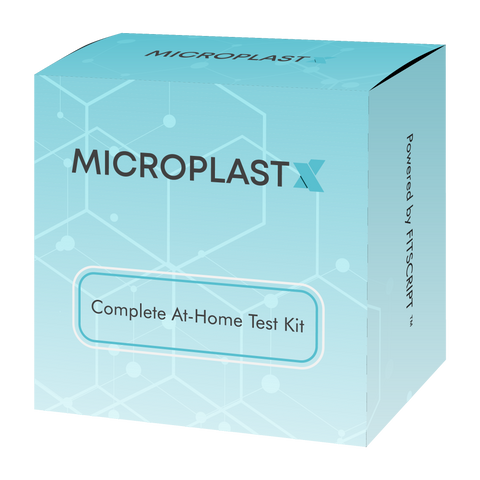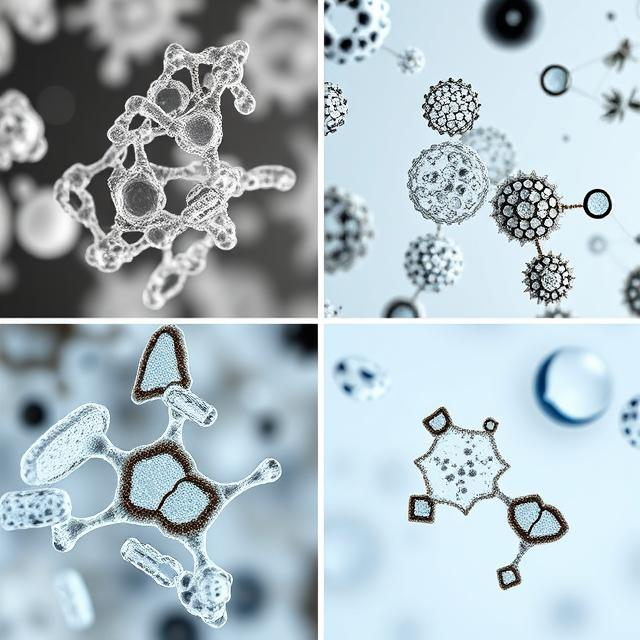Is There Plastics in Pills? Understand the Hidden Risks to Your Health
It's a question that might make you pause and really think: why would there be microplastics in pills or supplements? It seems counterintuitive for something meant to improve your health. However, the presence of microplastics in medication, or plastic coating in pharmaceutical drugs, is a growing area of concern. It highlights how pervasive plastic contamination has become, even in unexpected places. The immediate query is there plastics in pills? often leads to surprising answers.
There are several ways plastic can end up in your daily dose. First, plastic materials are often used throughout the manufacturing process itself. Think about the machinery, tubing, and even the bulk packaging that raw ingredients come in. Tiny plastic particles can shed from these materials during production and unintentionally become part of the final product, directly contributing to microplastics in medication.
Secondly, many pills and capsules themselves are designed with plastic-based components. This isn't always obvious; it could be the capsule shell itself, or even microscopic fibers from materials used in the factory environment.
Lastly, some supplements and medications are formulated with intentional plastic-derived ingredients, often for specific functional purposes such as providing a plastic coating in pharmaceutical drugs. So, when you ask, is there plastics in pills? the answer often points to various stages of production and formulation that introduce microplastics in medication. This widespread presence makes it increasingly important to understand plastic coating in pharmaceutical drugs and its implications for your health, confirming that yes, there truly is there plastics in pills. If you're concerned about your exposure, our MicroplastX Microplastics Blood Test Kit can provide clarity.
What Are Enteric Coatings and Do They Contain Plastic?
When discussing whether there is plastics in pills, one term that often comes up is enteric coatings. So, what exactly are enteric coatings, and do they contain plastic? It's a very good question for anyone concerned about microplastics in medication and the broader issue of plastic coating in pharmaceutical drugs.
Enteric coatings are special layers applied to oral medication tablets or capsules. Their main purpose is to prevent the pill from dissolving in the highly acidic environment of the stomach. Instead, the coating is designed to stay intact until it reaches the more alkaline environment of the small intestine, where the drug can then be released and absorbed. This protects the medication from stomach acid (especially if it's sensitive to acid) and also protects your stomach from potentially irritating drugs.
Now, to the do they contain plastic? part: Yes, many common enteric coatings are indeed made from polymers that are essentially plastic. Some of the most widely used polymers for enteric coatings include Cellulose Acetate Phthalate (CAP), Polyvinyl Acetate Phthalate (PVAP), Methacrylic Acid Copolymers (like Eudragit), Hydroxypropyl Methylcellulose Phthalate (HPMCP), and sometimes processed Shellac. These are synthetic polymers, which fall under the broad category of plastics. While they are considered safe for ingestion in the amounts used, their very nature means that when you ingest a pill with an enteric coating, you are ingesting a form of plastic coating in pharmaceutical drugs. This directly contributes to the overall presence of microplastics in medication and answers the question is there plastics in pills with a resounding yes, especially for coated varieties. Understanding this reveals a significant source of microplastics in medication. To understand your personal exposure from all sources, consider our MicroplastX Microplastics Blood Test Kit.
Are Prescription Drugs Also Affected by Plastic Contamination?
The discussion about is there plastics in pills often brings up a crucial follow-up: are prescription drugs also affected by plastic contamination? The answer, unfortunately, is yes. Just like over-the-counter supplements and vitamins, prescription drugs are not immune to the presence of microplastics in medication or the use of plastic coating in pharmaceutical drugs. This makes the query is there plastics in pills relevant across the entire spectrum of orally consumed medicines.
The reasons for this contamination are largely the same across the pharmaceutical industry, regardless of whether a drug is prescription or OTC:
-
Manufacturing Processes: Prescription medications are produced in vast quantities using industrial equipment. Machinery, conveyor belts, plastic tubing, and various containers in manufacturing facilities can all be sources of microplastic shedding, leading to unintentional microplastics in medication. This means that even the most essential drugs can contain them.
-
Excipients and Coatings: Many prescription drugs also rely on various excipients (inactive ingredients) and specialized coatings, including enteric coatings, for stability, controlled release, or to mask unpleasant tastes. As we've seen, these plastic coating in pharmaceutical drugs are often polymer-based, directly introducing plastic materials. This confirms the widespread nature of plastic coating in pharmaceutical drugs.
-
Packaging: Even the packaging of prescription drugs, whether blister packs, plastic bottles, or sachets, can contribute. Over time, or through friction, tiny plastic particles can abrade from the packaging and potentially contaminate the pills themselves.
The stringent regulations for prescription drugs primarily focus on the active pharmaceutical ingredient's purity, potency, and safety, not specifically on environmental microplastic contamination. So, while your prescription medication is safe for its intended therapeutic effect, the question of is there plastics in pills still applies, making microplastics in medication a universal challenge. This means the presence of plastic coating in pharmaceutical drugs is a widespread issue that affects many forms of medication. For a comprehensive look at your body's plastic burden, consider ordering your MicroplastX Microplastics Blood Test Kit today.
What Are the Health Risks of Ingesting Plastic-Coated Medications?
Given that there is plastics in pills and the widespread use of plastic coating in pharmaceutical drugs, a critical question arises: what are the health risks of ingesting plastic-coated medications? While these coatings are generally considered inert and safe in the quantities used for the drug's purpose, the emerging science on microplastics in medication points to potential concerns about cumulative exposure.
The primary worries revolve around:
-
Particle Accumulation: When you regularly ingest microplastics in medication, these particles enter your digestive system. While some are likely passed through, research suggests that some micro- and nanoplastics can be absorbed into the bloodstream and potentially accumulate in various organs. The long-term effects of this accumulation are not yet fully understood, making the impact of plastic coating in pharmaceutical drugs a subject of ongoing study.
-
Chemical Leaching from Coatings: Even if the plastic coating itself is inert, the process of its breakdown in the body could theoretically release trace amounts of chemical additives that were part of its formulation. These could be plasticizers, dyes, or stabilizers, the effects of which on the body are a subject of ongoing study, particularly regarding endocrine disruption. This raises questions about whether the plastic coating in pharmaceutical drugs is entirely benign.
-
Impact on Gut Microbiome: There's growing interest in how ingested microplastics might interact with the delicate balance of the gut microbiome, which plays a crucial role in overall health. Changes to the gut flora could have downstream effects on digestion, immunity, and even mental health.
-
Inflammatory Response: Some studies suggest that microplastics can trigger inflammatory responses in the body's tissues. While research specific to microplastics in medication is limited, the general concern applies.
It's important to reiterate that these are emerging areas of research, and the immediate health risks from typical ingestion of plastic coating in pharmaceutical drugs are considered low by regulatory bodies. However, for those concerned about their total exposure to microplastics in medication, understanding that there is plastics in pills is a key piece of the puzzle for overall health management. For a more complete understanding of your body's microplastic levels, consider using our MicroplastX Microplastics Blood Test Kit.
Which Medications Are Most Likely to Contain Microplastics?
When we talk about the reality of is there plastics in pills, it naturally leads to wondering: which medications are most likely to contain microplastics in medication? While it's difficult to pinpoint specific brands or active ingredients without comprehensive, public testing, we can infer which types of medication might have a higher likelihood of containing microplastics in medication or plastic coating in pharmaceutical drugs based on their formulation and delivery systems.
-
Coated Tablets and Capsules: As discussed, pills with enteric coatings are a prime example. Any tablet or capsule designed for controlled release, delayed release, or to bypass the stomach acid will likely use polymer-based coatings. This includes many pain relievers, probiotics, specific acid reflux medications, and some vitamin supplements. These are significant contributors to plastic coating in pharmaceutical drugs, directly answering the question of is there plastics in pills for many common items.
-
Extended-Release (ER) or Sustained-Release Medications: These formulations often use plastic-based matrices or coatings to control the rate at which the drug is released into the body over several hours. This design inherently involves plastic materials, increasing the likelihood of microplastics in medication.
-
Liquid Medications in Plastic Bottles: While not directly in the pill, liquid medications stored in plastic bottles can absorb microplastic particles leached from the container over time, especially if the liquid is acidic or stored for prolonged periods.
-
Powdered Supplements: While seemingly simpler, powdered supplements can still be exposed to microplastics in medication from manufacturing equipment, or even from the plastic scoops often included in their packaging.
Ultimately, if a medication is a tablet or capsule, the likelihood of some form of plastic coating in pharmaceutical drugs or incidental microplastics in medication is considerable. For those concerned about their cumulative intake and the question of is there plastics in pills, understanding these common forms is key. If you're curious about how this might be impacting your personal health, our MicroplastX Microplastics Blood Test Kit can provide valuable insights.
Can You Test Your Body for Plastic Buildup From Long-Term Medication Use?
After learning about the potential for plastics in pills, especially from microplastics in medication and plastic coating in pharmaceutical drugs, a very personal question emerges: can you test your body for plastic buildup from long-term medication use? It's a natural desire to understand the impact of what you've been taking.
The exciting news is, yes, you can. While specialized tests for specific plastic additives from medication only are not yet widely available, a broader assessment of your overall microplastic load in your body is now possible. This is crucial because your total exposure isn't just from pills; it comes from food, water, air, and other consumer products. Understanding your total burden can give you peace of mind or highlight areas where further reduction efforts are needed, even when you're aware there is plastics in pills.
MicroplastX offers a direct and convenient solution to this very concern. We understand the comprehensive nature of microplastic exposure. Our MicroplastX Microplastics Blood Test Kit allows you to assess the levels of various plastic particles, including those that fall into the nanometer range, present in your bloodstream. This test provides a tangible, scientific metric for your internal exposure to these pervasive contaminants. It can give you invaluable insight into your personal microplastic exposure, regardless of its source, including long-term microplastics in medication ingestion. Understanding how to test for microplastics provides a deeper understanding of the science behind detecting these tiny particles in biological samples.




